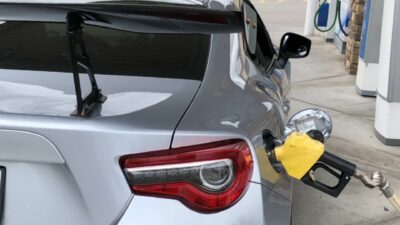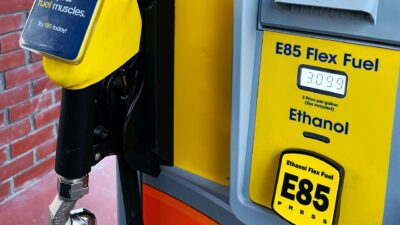In an age where environmental concerns are at the forefront of global discussions, it’s crucial for individuals to take responsibility for their carbon footprint, even while driving. Your vehicle may be a source of emissions, but by adopting eco-friendly driving habits, you can significantly reduce its impact on the environment. In this comprehensive guide, we’ll explore various ways to drive more sustainably and reduce your carbon footprint on the road.
1. Choose a Fuel-Efficient Vehicle
One of the most impactful decisions you can make for eco-friendly driving is selecting a fuel-efficient vehicle. Whether it’s a hybrid, electric car, or a high-mileage gasoline vehicle, the choice you make at the dealership can greatly affect your carbon emissions over time. Consider researching and investing in a vehicle with good fuel economy.
2. Maintain Your Vehicle
Regular vehicle maintenance is not only essential for safety but also for reducing emissions. A well-maintained vehicle runs more efficiently, which means it burns less fuel and emits fewer pollutants. Be sure to keep up with scheduled oil changes, air filter replacements, and tire maintenance.
3. Keep Your Tires Properly Inflated
Under-inflated tires can lead to reduced fuel efficiency and increased emissions. Check your tire pressure regularly and maintain it at the recommended levels. Properly inflated tires not only improve gas mileage but also ensure safer handling.
4. Practice Smoother Driving
Aggressive driving habits, such as rapid acceleration and hard braking, can significantly increase fuel consumption and emissions. Aim for smoother driving by gradually accelerating and decelerating. Anticipate traffic and use your brakes less often.
5. Reduce Idling Time
Idling consumes fuel unnecessarily and contributes to air pollution. Turn off your engine if you anticipate a wait of more than a minute. Modern engines are designed to use less fuel when restarted compared to idling for extended periods.
6. Carpool and Use Public Transportation
Reduce the number of vehicles on the road by carpooling with coworkers or friends. Additionally, consider using public transportation, biking, or walking for short trips when possible. Fewer vehicles on the road mean lower emissions.
7. Plan Your Trips Wisely
Combine multiple errands into one trip to minimize your driving. Planning your route efficiently can reduce mileage and save fuel. Use GPS navigation apps that offer real-time traffic updates to help you avoid congested routes.
8. Remove Excess Weight
Carrying unnecessary weight in your vehicle can decrease fuel efficiency. Clean out your trunk and remove roof racks or carriers when they’re not in use to reduce aerodynamic drag and save fuel.
9. Embrace Eco-Driving Techniques
Eco-driving is a set of driving techniques that prioritize fuel efficiency and emissions reduction. Some of these techniques include:
- Use cruise control: It helps maintain a steady speed, which can improve fuel efficiency on the highway.
- Drive at moderate speeds: Slower speeds generally result in better fuel economy.
- Avoid overuse of air conditioning: Use it sparingly as it can increase fuel consumption.
- Shift to higher gears early: In manual transmissions, shift to a higher gear as soon as possible without straining the engine.
10. Consider Alternative Fuels
If your vehicle is compatible, consider using alternative fuels such as ethanol, biodiesel, or compressed natural gas (CNG). These fuels can be more environmentally friendly than traditional gasoline or diesel.
11. Opt for Energy-Efficient Accessories
When it comes to vehicle accessories, choose energy-efficient options. For instance, use LED or energy-efficient headlights and ensure that all interior and exterior lights are turned off when not in use.
12. Participate in Ride-Sharing Programs
In addition to carpooling, you can also consider participating in ride-sharing programs or services like Uber or Lyft. This way, you’re sharing a vehicle with others, reducing the overall number of cars on the road.
13. Support Green Vehicle Initiatives
Stay informed about government incentives and programs that encourage eco-friendly driving. These may include tax credits for electric vehicle purchases or discounts on hybrid vehicles.
14. Offset Your Emissions
Consider carbon offset programs or initiatives that allow you to invest in projects that reduce greenhouse gas emissions, such as reforestation or renewable energy projects. These efforts can help compensate for your vehicle’s emissions.
15. Educate Yourself and Others
Lastly, spreading awareness about eco-friendly driving habits is essential. Share your knowledge with friends and family, and encourage them to adopt sustainable practices. Education plays a crucial role in reducing the overall environmental impact of driving.
In conclusion, eco-friendly driving habits not only reduce your carbon footprint but also save you money on fuel and maintenance costs. By making conscious choices and implementing the tips mentioned in this guide, you can contribute to a cleaner and more sustainable future while enjoying the convenience of personal transportation. Remember that every small effort counts, and collectively, we can make a significant impact on reducing emissions and protecting the environment.





